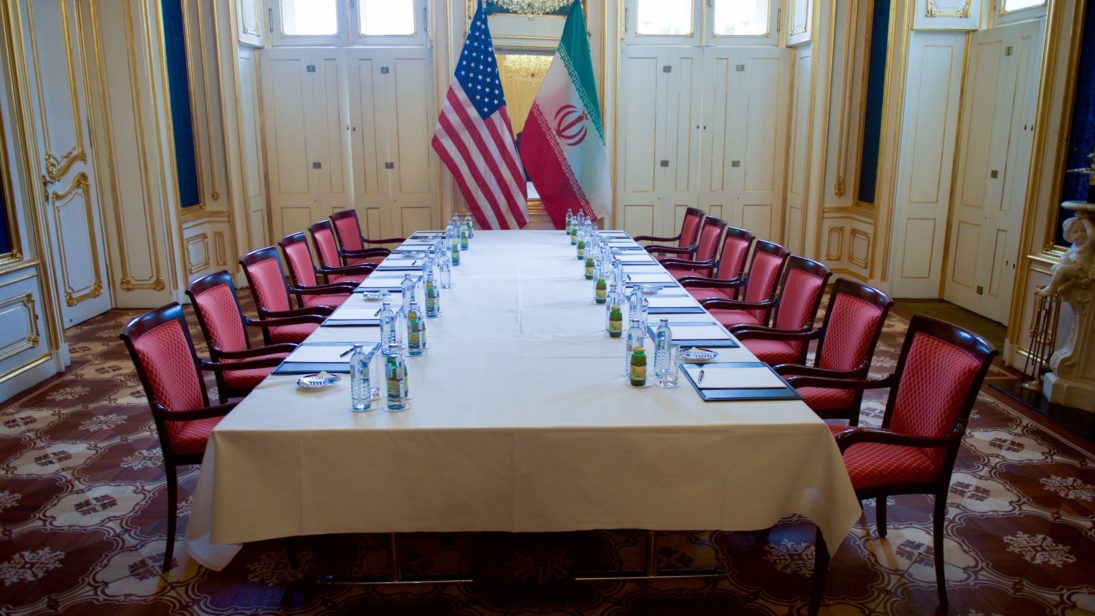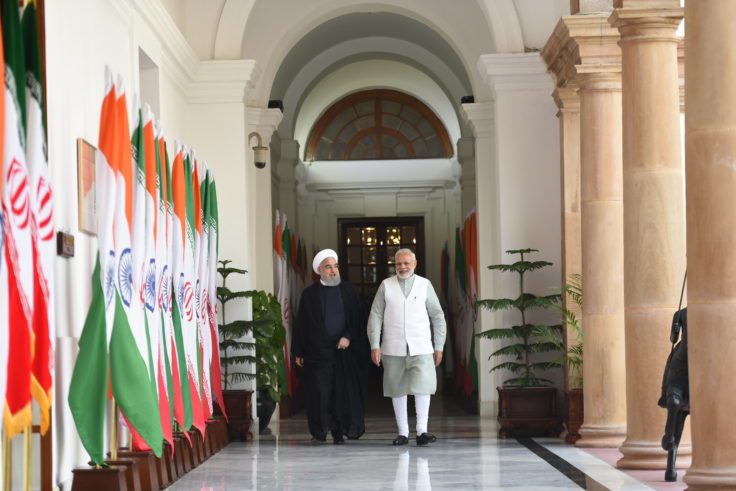
President Biden entered office with U.S.-Iran relations at a historic low. Tensions between the United States and Iran grew tremendously following the U.S. withdrawal from the Joint Comprehensive Plan of Action (JCPOA, also known as the Iran nuclear deal) and Trump’s “maximum pressure” campaign against Iran, which has failed to produce any tangible benefit. In addition to the debilitating economic sanctions, the U.S. assassination of the head of the Quds Force, Qassem Soleimani, and the plausible U.S. involvement in the Iranian nuclear scientist Mohsen Fakhrizadeh’s killing have further strengthened hostility and defiance from Iran. In fact, Trump’s erratic approach encouraged Iran to breach the nuclear deal’s obligations by defying the limits set on enriched uranium production. This hostility has also pushed Iran firmly into China’s embrace. Two months before demitting office Trump even sought options for striking Iran’s major nuclear site.
Now, a Biden presidency has generated expectations of some continuity to Obama’s Iran policy that could foreground a thaw and add predictability to the U.S.-Iran relationship—absent throughout the Trump administration. Most notably, Biden has announced his intentions to return to the JCPOA, if Iran returns to compliance. Given the renewed centrality of the deal as a parameter to assess the broader contours of U.S.-Iran relations and the impact of this relationship on South Asia’s geopolitical, economic, and security spheres, a return to JCPOA compliance would be a notable development for the region. Although a return to compliance is likely to open doors for trade and greater flexibility in India, Pakistan, and Afghanistan’s ties with Iran, each should also anticipate challenges in returning to compliance and potential regional pushback.
Nuclear Deal Compliance under Biden
The prospects of a return to JCPOA compliance revolve around the dramatically changed political context in Iran since the Obama administration. The colossal trust deficit coupled with public pressure and the heightened hardline voices within Iran may negatively shape the trajectory of the current deal-making process, especially with the upcoming June elections in Tehran. While Iran urged America to rejoin the deal, it has also demanded compensation for the loss the country has suffered due to American sanctions. Tehran also insists that Washington remove the sanctions before it returns to compliance to show its commitment and trustworthiness in moving forward with the deal. However, Washington continues to demand Iran’s return to full compliance before returning to the deal.
At the same time, Washington’s Gulf allies and Israel insist that they be parties to negotiation and are pressuring for a new deal, claiming that the existing one has failed to address the risk of nuclear proliferation. Tehran has rejected such propositions. These developments suggest that a return to compliance by both sides still remains speculative. Attaining a more transactional deal would require more efforts and reconciliation. However, noticeable political willingness from both Iran and the United States to return to full compliance gives some cause for optimism.
Tehran also insists that Washington remove the sanctions before it returns to compliance to show its commitment and trustworthiness in moving forward with the deal. However, Washington continues to demand Iran’s return to full compliance before returning to the deal.
Implications for South Asia: Aspirations, Deliverables, and Concerns
Should U.S.-Iran tensions ease, India would benefit. Lifting sanctions would ease geopolitical, strategic, and economic constraints on India-Iran ties and allow India to comfortably pursue its interests in Iran, which would notably include resuming oil imports. Iran was India’s second largest oil supplier before India complied with American sanctions and stopped oil imports from the country. Relaxation of sanctions, even if partial or conditional, will consequently benefit India. New Delhi had received sanction waivers during the Obama period, but could no longer receive a waiver under Trump’s maximum pressure campaign. Throughout the Obama administration, India had been able to balance both Tehran and Washington without incurring much cost.
Further, a return to compliance with the nuclear deal will give India greater diplomatic space to engage more with Tehran to address the irritation caused by India’s closer alignment with Washington. Similarly, an opportunity would arise for Tehran to strengthen the ties affected by its criticism of India’s internal policies, such as Citizenship Amendment Act (CAA) and the revocation of Article 370, which Iran claimed were anti-Muslim. However, Iran’s measured approach towards the disturbing plight of Uighur Muslims in China provides reason to believe that, rather than the Muslim factor alone, the rebuke of Indian actions was driven mainly by Iran’s frustration over India’s lack of resilience to U.S. pressure.

Bolstering ties will further strengthen India’s position to preserve its strategic interests by enhancing regional connectivity in Eurasia. The development of regional infrastructure is vital for New Delhi’s plans to expand its economic interests and political influence beyond its immediate neighborhood through investments and trade in Afghanistan, Central Asia, Russia, and Europe. To this end, India has been involved in the development of Chabahar Port in southeast Iran, which has the potential to offer a parallel alternative to China’s Belt Road Initiative (BRI). Unfortunately, the downward spiral in the U.S.-Iran bilateral ties has affected India’s efforts to develop the port.
Despite Washington’s sanction exemptions to the Chabahar project, fear of economic sanctions prevented global companies’ involvement in the project, causing financial difficulties and delays. Even India was reportedly reluctant to transact with IRCON International, which was involved in constructing 628 km Chabahar-Zahedan project, due to the company’s status as a sanctioned entity. The lifting of sanctions is expected to alleviate these concerns. Closer ties will moreover allow mutual cooperation for mutual benefits. For instance, in Afghanistan, the potential American withdrawal provides scope for establishing an Iran-India-Russia trilateral cooperation to engage the Taliban. In this regard, Iran’s tactical engagement with the Taliban, despite a hostile past and potential national security threats from the latter, makes Tehran a useful partner.
The lifting of sanctions will similarly come as a relief to Pakistan and Afghanistan. Both states would be able to count on Iranian oil for their energy needs. Improvement in U.S.-Iran ties will dilute Pakistan’s struggles to balance ties with Washington and Tehran and could also have a positive impact on the Iran-Pakistan gas pipeline project stalled largely due to the U.S. sanctions. The likely improvement in Iran’s economy in the absence of sanctions will be a particular boon for Kabul, because of the latter’s economic ties with Iran. Tehran has been a significant trading partner for Afghanistan and many Afghan migrant laborers earn their livelihoods in Iran. Afghanistan also stands to gain from the proposed infrastructure projects from Chabahar Port that seeks to link the country to the Middle East and Europe, which would provide the landlocked Afghanistan access to the Indian Ocean and enhance Afghanistan’s options for trade.
However, India, Pakistan, and Afghanistan should also be concerned about regional pushback to the JCPOA. The potential resurrection of the deal has already generated fears among the prominent regional players, such as Saudi Arabia and Israel, that are wary of Iran’s geopolitical ambition. In fact, Iran’s showcasing of a surprising level of resilience in the face of adversity seems to have intensified the security concerns of its regional rivals, who are also the United States’ allies. Saudi Arabia felt threatened by an empowered Iran under the earlier nuclear deal, while Israel has repeatedly averred that the deal poses existential threats to the country and recently warned Washington of the possibility of a strike on Tehran. Therefore, a return to compliance without resolving these concerns can propel more confrontational postures between Iran and these parties, or at worst, it could spark regional instability.
Iran’s showcasing of a surprising level of resilience in the face of adversity seems to have intensified the security concerns of its regional rivals, who are also the United States’ allies.
If the current situation turns into full-blown hostilities, it would be difficult for India to achieve a well-balanced foreign policy between the two axes. New Delhi maintains and would like to continue close ties with both Saudi Arabia and Israel. Nevertheless, a strategy by either of these countries to contain Iran, which is likely to count on cooperation from powerful friends, will produce an alignment challenge for India. Similarly, for Pakistan and Afghanistan this would mean a considerable constraint in navigating the sectarian and political rivalry between Iran and Saudi Arabia. Compared to India, Pakistan and Afghanistan are more vulnerable to fallouts of regional sectarian rivalry playing out in their domestic arena. Regional power projection often appeals to the Sunni and Shia populations in these countries, posing internal security challenges. For Pakistan, the existing major rift in its traditionally long and deep economic and political ties with Saudi Arabia would make it even more challenging to keep equidistance from Riyadh and Tehran.
Conclusion
Overall, a return to nuclear deal compliance would serve as a first and substantive indication of improvement in the U.S.-Iran relations under Biden administration. Such a development seemingly bodes well for South Asia, which maintains economic, strategic, and security ties with Tehran. However, that does not by any measure suggest a smooth ride for the South Asian countries. Potential security concerns stemming from a revival of the nuclear deal still persist in the contentious and rapidly evolving regional dynamics of the Middle East, where threat perceptions and competition for supremacy among regional powers pose potential challenges for South Asia.
***
Image 1: U.S. Department of State via Flickr


